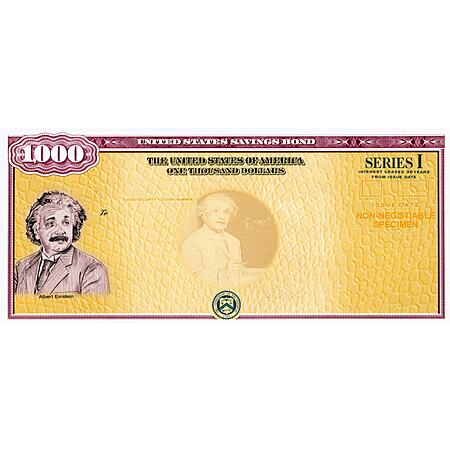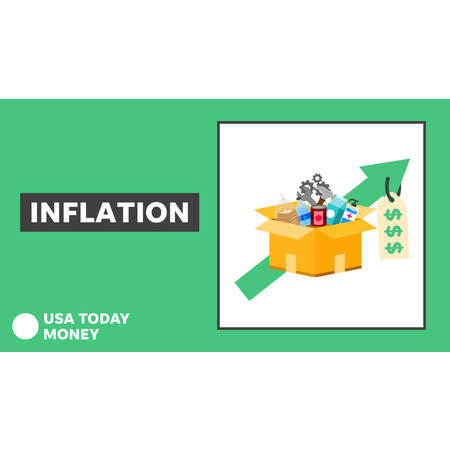Note: This popular deal is still available.
U.S, Government Treasury is currently offering
7.12% Interest Rate in combined
Fixed + Inflation Rate Earnings valid on newly issued
Series I Savings Bonds purchased from November 2021 through April 2022. Limit of $10,000 / year in interest earnings per person.
Thanks to community member
dn90003 for sharing this offer.
About this offer:- How do I buy a Series I bond?
- Must register or sign-in to your free TreasuryDirect.gov account and link a bank account.
- Click here to view a Guided Tour
- What is a Series I bond? (source)
- "A savings bond that earns interest based on combining a fixed rate and an inflation rate."
- You may use Series I bonds to:
- Save in a low-risk product that helps protect your savings from inflation
- Supplement your retirement income
- Give as a gift
- Pay for education
- Click here for more information about Series I Bonds
- What interest does a Series I bond earn? (source)
- A combination of a fixed rate that stays the same for the life of the bond and an inflation rate that is set twice a year.
- For bonds issued from November 2021 through April 2022, the combined rate is 7.12%





Leave a Comment
Top Comments
In case you're wondering, here's how the rate is computed:
Composite rate =
I bought $10k in denominations of 2,3, 5 so if I want to cash out I can do it in chunks instead of having to cash out $10k.: Better than any CD or bank rate if you want to stay in cash.
https://www.treasurydir
3,498 Comments
Sign up for a Slickdeals account to remove this ad.
7.12% is great but only for 6 month kills it, I bet they will slash the rate in half after a while like any institutions would do. You would get better long term return with stock or crypto IMO.
I bought $10k in denominations of 2,3, 5 so if I want to cash out I can do it in chunks instead of having to cash out $10k.: Better than any CD or bank rate if you want to stay in cash.
If its through online, Wondering if I can redeem them even while I stay out of U.S as long as I have the active bank account ?
Sign up for a Slickdeals account to remove this ad.
In case you're wondering, here's how the rate is computed:
Composite rate = [fixed rate + (2 x semiannual inflation rate) + (fixed rate x semiannual inflation rate)]
If its through online, Wondering if I can redeem them even while I stay out of U.S as long as I have the active bank account ?
https://www.treasurydir
I bought $10k in denominations of 2,3, 5 so if I want to cash out I can do it in chunks instead of having to cash out $10k.: Better than any CD or bank rate if you want to stay in cash.
It is popular to take low lending standards as proof that the free market has failed, that the system that is supposed to reward productive behavior and punish unproductive behavior has failed to do so. Yet this claim ignores that for years irrational lending standards have been forced on lenders by the federal Community Reinvestment Act (CRA) and rewarded (at taxpayers' expense) by multiple government bodies.
The CRA forces banks to make loans in poor communities, loans that banks may otherwise reject as financially unsound. Under the CRA, banks must convince a set of bureaucracies that they are not engaging in discrimination, a charge that the act encourages any CRA-recognized community group to bring forward. Otherwise, any merger or expansion the banks attempt will likely be denied. But what counts as discrimination?
According to one enforcement agency, "discrimination exists when a lender's underwriting policies contain arbitrary or outdated criteria that effectively disqualify many urban or lower-income minority applicants." Note that these "arbitrary or outdated criteria" include most of the essentials of responsible lending: income level, income verification, credit history and savings history--the very factors lenders are now being criticized for ignoring.
At first, this quota was 30%; that is, of all the loans they bought, 30% had to be made to people at or below the median income in their communities. HUD, however, was given authority to administer these quotas, and between 1992 and 2007, the quotas were raised from 30% to 50% under Clinton in 2000 and to 55% under Bush in 2007. Despite Frank's effort to make this seem like a partisan issue, it isn't. The Bush administration was just as guilty of this error as the Clinton administration. And Frank is right to say that he eventually saw his error and corrected it when he got the power to do so in 2007, but by then it was too late.
It is certainly possible to find prime mortgages among borrowers below the median income, but when half or more of the mortgages the GSEs bought had to be made to people below that income level, it was inevitable that underwriting standards had to decline. And they did. By 2000, Fannie was offering no-downpayment loans. By 2002, Fannie and Freddie had bought well over $1 trillion of subprime and other low quality loans. Fannie and Freddie were by far the largest part of this effort, but the FHA, Federal Home Loan Banks, Veterans Administration and other agencies--all under congressional and HUD pressure--followed suit. This continued through the 1990s and 2000s until the housing bubble--created by all this government-backed spending--collapsed in 2007. As a result, in 2008, before the mortgage meltdown that triggered the crisis, there were 27 million subprime and other low quality mortgages in the US financial system. That was half of all mortgages. Of these, over 70% (19.2 million) were on the books of government agencies like Fannie and Freddie, so there is no doubt that the government created the demand for these weak loans; less than 30% (7.8 million) were held or distributed by the banks, which profited from the opportunity created by the government. When these mortgages failed in unprecedented numbers in 2008, driving down housing prices throughout the U.S., they weakened all financial institutions and caused the financial crisis.
Sign up for a Slickdeals account to remove this ad.
In case you're wondering, here's how the rate is computed:
Composite rate = [fixed rate + (2 x semiannual inflation rate) + (fixed rate x semiannual inflation rate)]
In for one. 😂
Leave a Comment